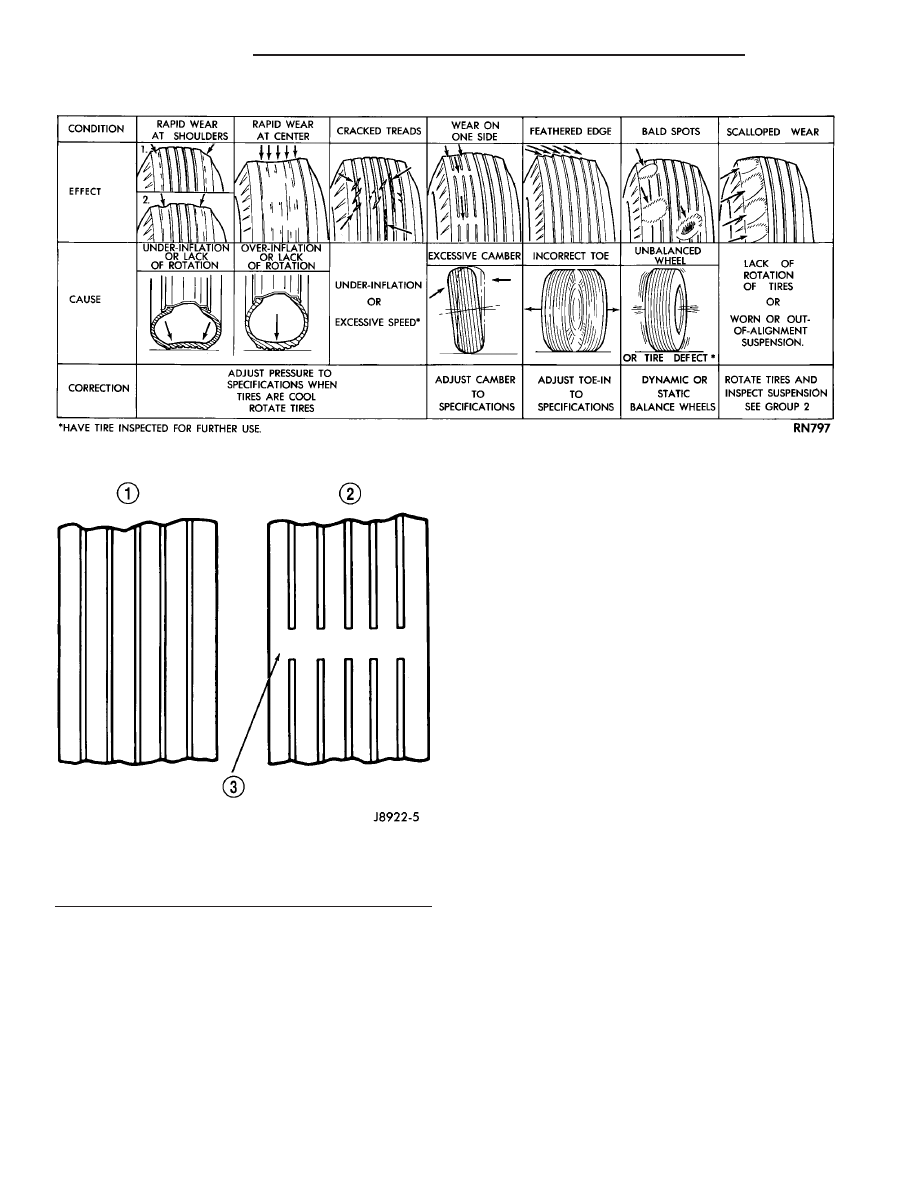Dodge Neon / Neon SRT-4. Manual - part 377

DIAGNOSIS AND TESTING - VEHICLE LEAD
DIAGNOSIS AND CORRECTION
Use the following chart to diagnose a vehicle that
has a complaint of a drift or lead condition. The use
of this chart will help to determine if the lead condi-
tion is the result of a bad tire or is caused by the
wheel alignment.
Fig. 18 Tire Wear Patterns
Fig. 19 Tread Wear Indicators
1 - TREAD ACCEPTABLE
2 - TREAD UNACCEPTABLE
3 - WEAR INDICATOR
22 - 10
TIRES/WHEELS
PL/SRT-4
TIRES (Continued)